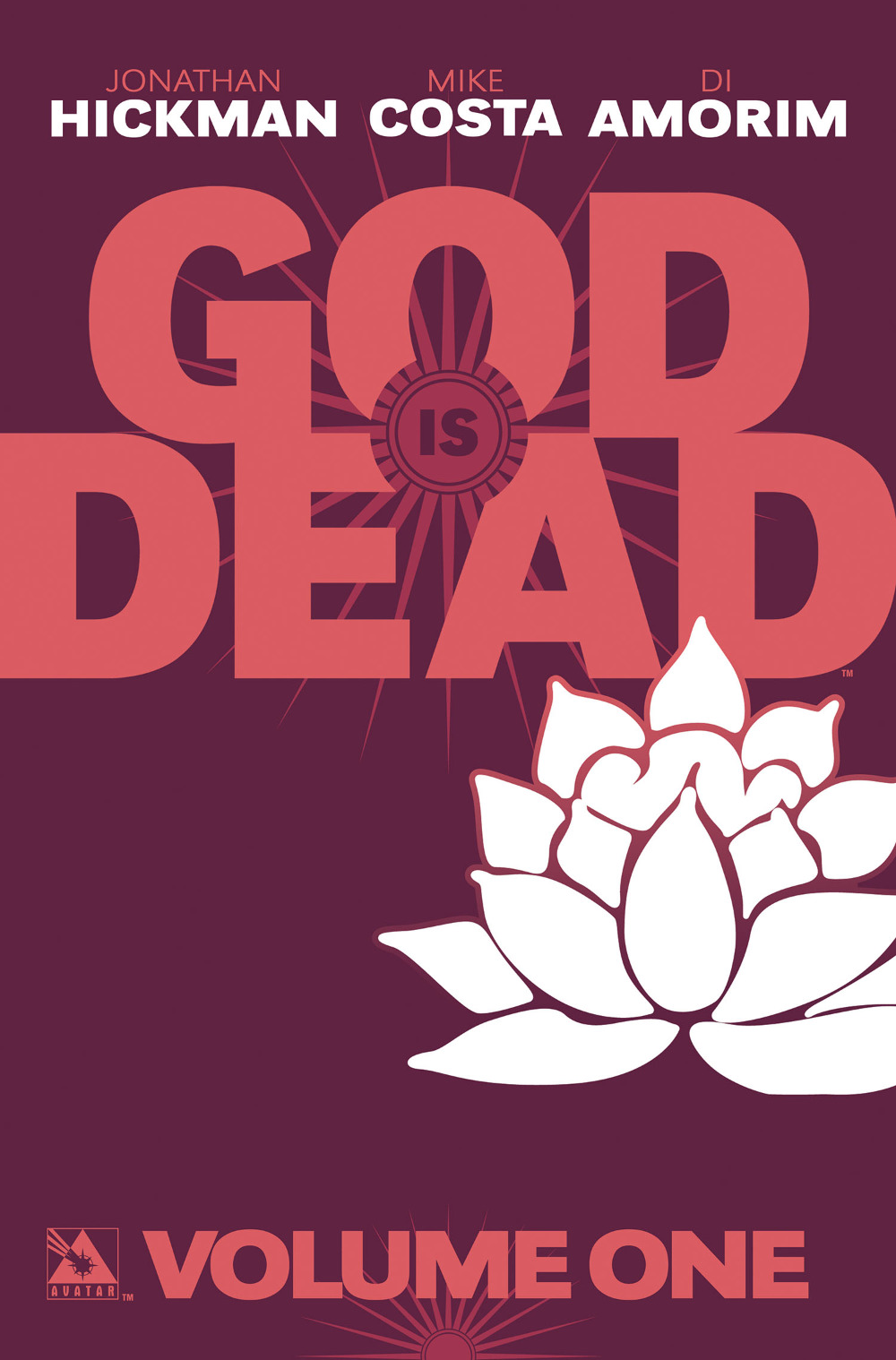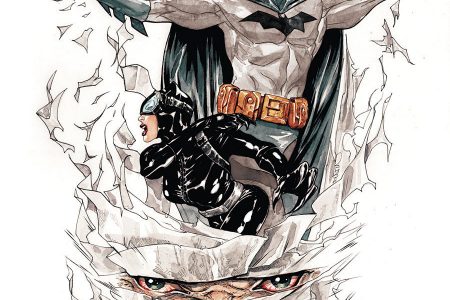God Is Dead #1–6
Created by Jonathan Hickman
Written by Jonathan Hickman and Mike Costa
Art by Di Amorim
Colours by Juanmar
Letters by Kurt Hathaway
Published by Avatar Press
In April and May 2015, a range of disasters strike around the global: a volcanic eruption, a massive temperature drop, massive rainfall, incredible sandstorms, a huge seismic event. The death toll is in the millions. Then Zeus turns up in St Peter’s Basilica … Hickman is the modern master of high-concept comic books, and this one is another: the gods of myth have returned to Earth, and this is what happens next.
In Valhalla, Odin holds a summit for other gods to discuss what to do with Earth: with Loki and Thor, there is Horus, Anubis and Bast from the Egyptian gods; Vishnu, Shiva and Brahma from the Hindu gods; Zeus, Ares and Aphrodite from the Greek pantheon; Quetzalcoatl, Huitzilopochtli and Tezcatlipoca from the Mexican deities. And they want it all back to the way it was: worship, obedience, everything.
On Earth, things have changed since the divine made its presence known. Mexico City has a religious uprising and a return to human sacrifice. The former republic of Texas becomes New Azcapotzalco, which is bombed by the head of the remaining US army in the Raven Rock Mountain Complex, but which doesn’t kill the god there. The Norsemen have taken the northern hemisphere; America is squeezed between them and the Nahuatl front. Europe is under Greek influence and the Hindu awakening. The African continent is under ‘the purifying light of Ra’. The only people who seem to be doing anything about it are ‘the Collective’ – a group of the smartest minds on the east coast of America. Dr Sebastian Reed of MIT, Thomas Mims (the Einstein-alike), Airic Johsson (young, glasses), Dr Henry Rhodes (the Stephen Hawking-alike), along with Gaby, whose family runs a security consultancy agency (who is ludicrously dressed in a boob tube with an X on it, a short skirt, boots, fishnet sleeves from wrist to bicep, and a choker – but hey, at least she knows how to use guns, so that’s all right). They are trying to work out how to kill a god (and asking questions: Are gods alive in the strictest sense? Are they physically real? Are they stories?) – so first, they need to capture a god and exam it.
In this endeavour, they are helped by the gods themselves – because having the world wasn’t enough, so they start killing the others (Odin the Viking king is the main culprit in this regards). With samples of blood, bone marrow and brain cells of actual gods, the Collective decide that the only way to kill a god is to create their own …
This is a strange concoction: it is a very strong conceit for a story (all the pantheons of gods exist and have returned to this plane of existence, and all that it entails) that has lots of intriguing angles to explore. However, it doesn’t seem to completely examine it in full – why are there only three of each pantheon (apart from the connection of the trinity in Catholicism) when showing the deities fighting? Where are all the rest of gods? What about the other pantheons? The story only examines polytheistic religions – the monotheistic religions are noticeably absent, unless the comic book’s title is specifically referring to the death of the Judeo-Christian god (and fortunately avoid any mention of Islam) – which I hope is explored later in the story, because it is a noticeable absence in the narrative.
We are told that the book is written by Hickman and Costa, but it feels more like it’s plotted by Hickman and written by Costa because the dialogue doesn’t have the sharpness of Hickman’s previous work (one line is, ‘Trusted a fart once, Gaby. Shit all over myself’, which is embarrassing). There are also mistakes: on the second page, there is a typo (‘centigrate’ instead of ‘centigrade’) and in same narrative box, it has ‘May 2’ whereas the rest of the page has ordinals. The whole product doesn’t have the exactness of Hickman, which takes away from the fascinating narrative hook. The artwork by Amorim has a similar lack of polish – the artwork is competent and solid, but the style is unexciting and the storytelling is straightforward. This is a book with a great idea and I want to know what happens in it, because these first six issues only hint at the scope of the ramifications, but it could have done with an upgrade in the writing and art departments.
Disclosure: this book was provided for review purposes.




